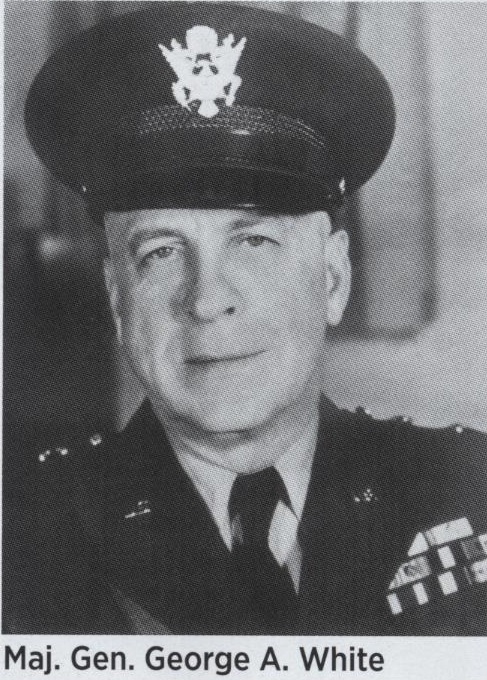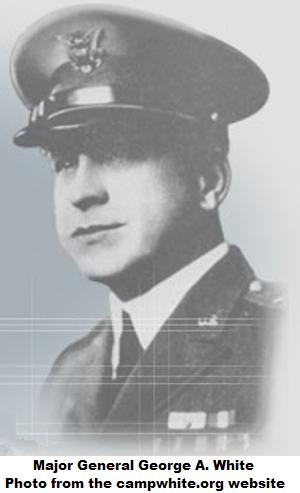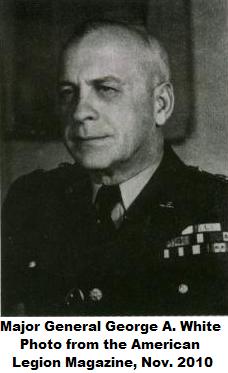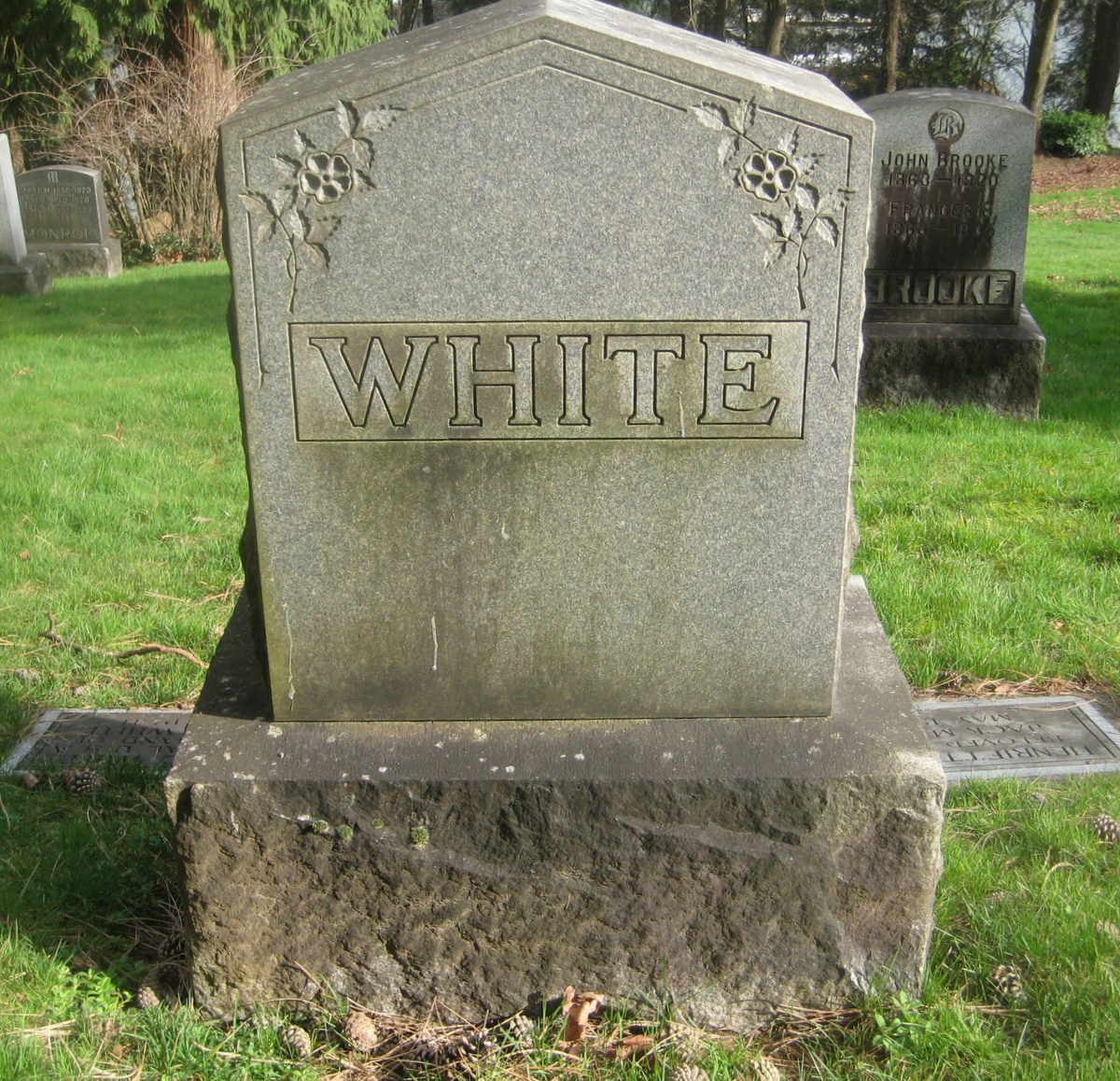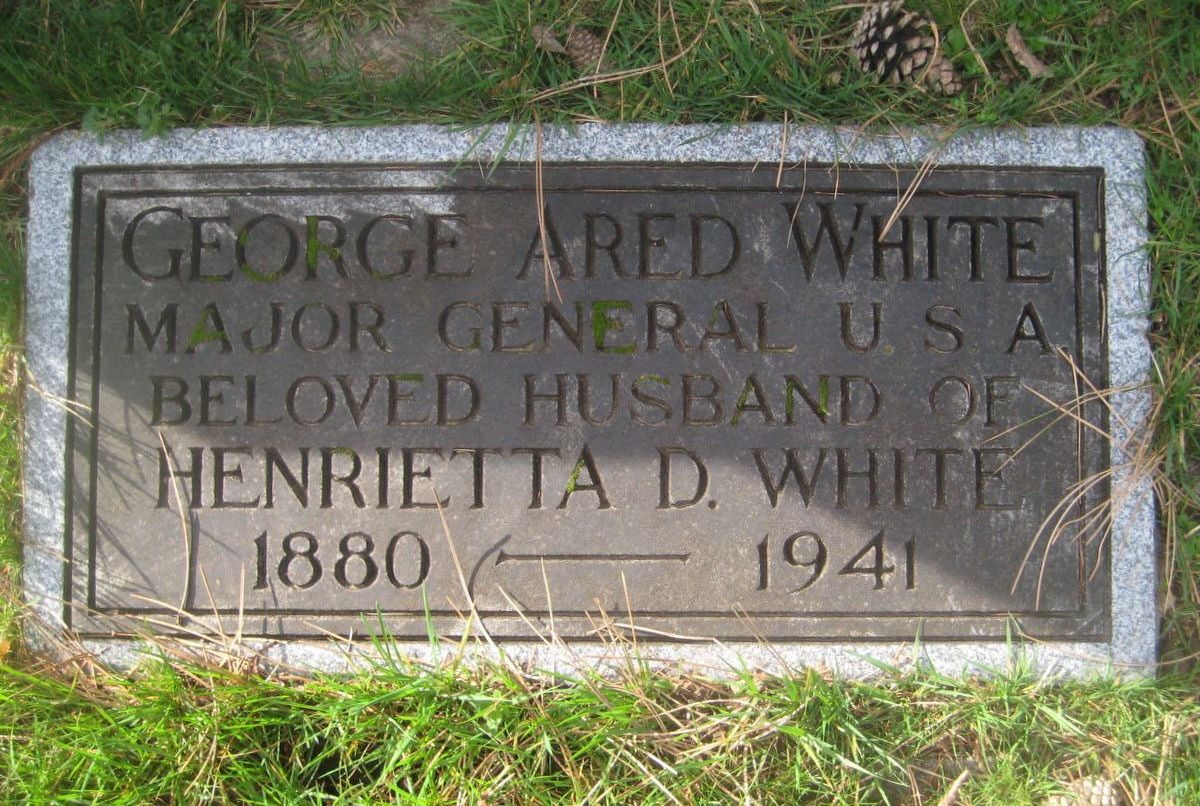LEGIONNAIRES: THE FIRST GENERATION
Officer Became first editor of American Legion Weekly.
In January 1919, while in Paris on three days of leave, George White sat at a restaurant with Theodore Roosevelt Jr. and talked about his idea to organize a society of American veterans of the world war. Roosevelt shared that desire, and a month later, the two men gathered with 18 other officers at an informal dinner to discuss the matter further. A temporary committee was formed, and a call went out to the entire American Expeditionary Force to send representatives to a caucus in March.
White, who traveled across Europe as a member of Gen. John Pershing's staff, succeeded in spreading word of the Paris caucus to U.S. combat divisions and SOS sections. Nearly 1,000 enlisted mend and officers attended, and The American Legion was born. When White arrived home in June, members of the new national executive committee met him in New York City and asked him to help build the Legion in the United States. He agreed, giving up a planned two-month vacation. He became the first editor and general manager of The American Legion Weekly, drawing on his experience as an Oregon journalist. He also served on the National Executive Committee from 1920 to 1922.
Never one to move slowly, White was a cub reporter in Salt Lake City by 16. He took a leave from his career as a newspaperman two years later to volunteer in the Spanish-American War. Between 1899 and 1915, he served in the Utah National Guard and the Oregon National Guard, eventually becoming adjutant general in Oregon. In World War I, he served on the Western Front with both the 41st Division and General Headquarters of the AEF.
In 1930, White was appointed by the president as major general of the line and assigned to command the 41st Division, which included troops from Oregon, Washington, Idaho, Montana and Wyoming. By 1940, he was credited with running the nation's top Guard division. Following large-scale maneuvers in 1941, White became ill, passing away at his home in Camp Clackamas, Ore., two weeks before the Japanese bombing of Pearl Harbor.
As a tribute to the "soldier's general," Oregon's Camp White was completed in 1942. More than 110,000 troops trained there before it was deactivated in 1946 and later renamed White City.
In 1954, Henrietta White accepted the Distinguished Service Medal, the Legion's highest honor, on behalf of her late husband, saying, "To me, this is the most touching memorial, for it is like a father being honored by his own children."
THE DOSSIER:
Born in Long Branch, Illinois on July 18, 1880.
Served on the Mexican border as a cavalry captain in 1916.
Worked as Sunday editor of the Portland Oregonian until 1915, when he became adjutant general of the Oregon National Guard.
Served as the Legion's first national vice commander, and as the first editor and general manager of The American Legion Weekly.
Awarded France's Legion of Honor in 1934 for cultivating U.S. - French ties.
Wrote "Attack on America," about the possibility of an invasion of the West Coast, and "The Cradle Days of The American Legion," which first appeared in serial form.
Commanded the 41st Infantry Division until his death on November 23, 1941.
Biography information from the American Legion Magazine, November 2010 article by Paul Fedorchak.
LEGIONNAIRES: THE FIRST GENERATION
Officer Became first editor of American Legion Weekly.
In January 1919, while in Paris on three days of leave, George White sat at a restaurant with Theodore Roosevelt Jr. and talked about his idea to organize a society of American veterans of the world war. Roosevelt shared that desire, and a month later, the two men gathered with 18 other officers at an informal dinner to discuss the matter further. A temporary committee was formed, and a call went out to the entire American Expeditionary Force to send representatives to a caucus in March.
White, who traveled across Europe as a member of Gen. John Pershing's staff, succeeded in spreading word of the Paris caucus to U.S. combat divisions and SOS sections. Nearly 1,000 enlisted mend and officers attended, and The American Legion was born. When White arrived home in June, members of the new national executive committee met him in New York City and asked him to help build the Legion in the United States. He agreed, giving up a planned two-month vacation. He became the first editor and general manager of The American Legion Weekly, drawing on his experience as an Oregon journalist. He also served on the National Executive Committee from 1920 to 1922.
Never one to move slowly, White was a cub reporter in Salt Lake City by 16. He took a leave from his career as a newspaperman two years later to volunteer in the Spanish-American War. Between 1899 and 1915, he served in the Utah National Guard and the Oregon National Guard, eventually becoming adjutant general in Oregon. In World War I, he served on the Western Front with both the 41st Division and General Headquarters of the AEF.
In 1930, White was appointed by the president as major general of the line and assigned to command the 41st Division, which included troops from Oregon, Washington, Idaho, Montana and Wyoming. By 1940, he was credited with running the nation's top Guard division. Following large-scale maneuvers in 1941, White became ill, passing away at his home in Camp Clackamas, Ore., two weeks before the Japanese bombing of Pearl Harbor.
As a tribute to the "soldier's general," Oregon's Camp White was completed in 1942. More than 110,000 troops trained there before it was deactivated in 1946 and later renamed White City.
In 1954, Henrietta White accepted the Distinguished Service Medal, the Legion's highest honor, on behalf of her late husband, saying, "To me, this is the most touching memorial, for it is like a father being honored by his own children."
THE DOSSIER:
Born in Long Branch, Illinois on July 18, 1880.
Served on the Mexican border as a cavalry captain in 1916.
Worked as Sunday editor of the Portland Oregonian until 1915, when he became adjutant general of the Oregon National Guard.
Served as the Legion's first national vice commander, and as the first editor and general manager of The American Legion Weekly.
Awarded France's Legion of Honor in 1934 for cultivating U.S. - French ties.
Wrote "Attack on America," about the possibility of an invasion of the West Coast, and "The Cradle Days of The American Legion," which first appeared in serial form.
Commanded the 41st Infantry Division until his death on November 23, 1941.
Biography information from the American Legion Magazine, November 2010 article by Paul Fedorchak.
Inscription
Major General USA
Beloved Husband of Henrietta D. White
Family Members
Sponsored by Ancestry
Advertisement
Explore more
Sponsored by Ancestry
Advertisement








